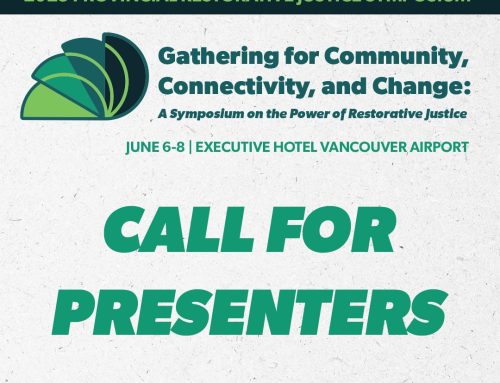Although written in 2002, these myths surrounding restorative justice are still very much a reality. Hope Howard Zehr’s words can guide you in your work in addressing some of these common misconceptions of RJ.
Restorative justice is not the same as conflict resolution
The principles of restorative justice share much in common with those of conflict resolution, and indeed some streams of restorative justice practice in North America developed out the field of conflict mediation. However, important differences also exist between the respective assumptions underlying restorative justice and conflict resolution. For example, conflict resolution is often approached with an assumption of relative equality in power between parties, facilitator neutrality, and a focus on resolution or settlement. Restorative justice, on the other hand, is approached with assumptions of power inequality and the presence of uni-directional obligations (the perpetrator has taken something from a victim and needs to find avenues for repair), as well as facilitator partiality towards justice outcomes.
Restorative justice is not just for youth or comparatively minor incidents
While there are many excellent examples of restorative approaches being employed with young people who cause harm, there are also a great many programs that work effectively among adults. Restorative justice does not assume that young people and adults differ fundamentally in their ability to take meaningful responsibility, demonstrate empathy, learn from mistakes, or otherwise address the needs of harmed parties.
The belief that restorative justice is best used for more minor may arise from a perception that such interventions will be more readily accepted in society. It may also arise from a misperception that restorative approaches permissive of, or ‘soft’ on, offending behaviour – and that more serious offenses require ‘harder’ punishments. However, as our orientation shifts from what people deserve to what they need, these distinctions break down. It is often in more serious cases that the human needs on all sides of the incident are the strongest, and thus that there is the greatest requirement for a needs-based form of justice. Many programs exist in North American that works in the aftermath of very serious offending. For example Fraser Region Community Justice Initiatives in BC, and the Restorative Opportunities Program (of the Correctional Service of Canada) across the remaining Provinces and Territories, work restoratively in the most serious crimes in the Criminal Code of Canada.
Restorative Justice is not primarily about forgiveness or reconciliation
Many compelling examples of forgiveness and/or renewed relationships between former adversaries have arisen out of the practice of restorative justice, and some of these have gained attention in the media. While such examples may provide inspiration for some restorative justice participants and practitioners alike, it would be misleading and potentially harmful to create universal expectations for these outcomes.
Restorative justice is not necessarily an alternative to conventional justice processes
Many restorative justice programs within communities and institutions represent alternatives to, or diversion from, judicial or other adversarial means of achieving justice or discipline. However, some programs function explicitly in conjunction with pre-existing systems of justice. For example, most adult victim offender dialogue in cases of severe violence is carried out during the incarceration or parole period of an offender’s sentence, and by design carries no impact on the length of sentence or conditions of release.
Restorative Justice is not vigilante justice
Some critics of restorative justice have raised concerns about the involvement of communities in justice processes, citing historical examples of community involvement leading to vigilante or ‘mob’ justice. However, restorative justice, with its emphasis on values of respect and human dignity, differs substantially from these reactionary and retributive community responses. Restorative justice asks: what do those impacted by the harm need from justice when they are invited into safe, respectful conversation which invites them into their best thinking. Furthermore, a growing dialogue between the human rights field and that of RJ indicates a recognition that RJ cannot stay true to its values if it fosters justice in which ‘anything goes.’ Nevertheless, the issue of community involvement in justice, and how RJ might contend with the retributive impulse, remains a complex issue with which RJ advocates must continue to reckon.
(Adapted from Zehr, 2002)







